Last Updated on April 4, 2024
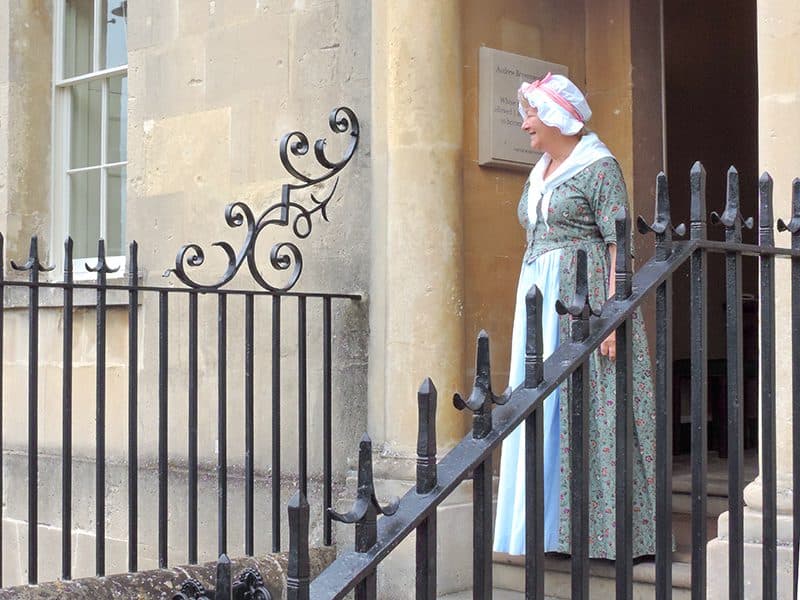
Estimated reading time: 11 minutes
By Jim Ferri
A day trip from London to Bath, on the southern edge of the Cotswolds, is an excellent getaway from the British capital.
Bath isn’t far from London – it’s only 1½ hours by train from Paddington Station, a great and easy day trip from the capital.
But take the trip, and when you arrive, you’ll feel like you’ve traveled back to another century as you walk about the city.
The question, though, is which century?
While this beautiful city is famous for its spectacular Roman baths, it’s also popular for its 18th-century Georgian architecture. This pleasant mash-up of history and architecture has earned the city its UNESCO World Heritage status.
It also makes Bath a popular day- and a long-weekend trip from London, which only contributes to the city’s onerous parking problems. Luckily, though, once you’ve dumped the car, you’ll find it’s an easy city to walk about.
Table of contents
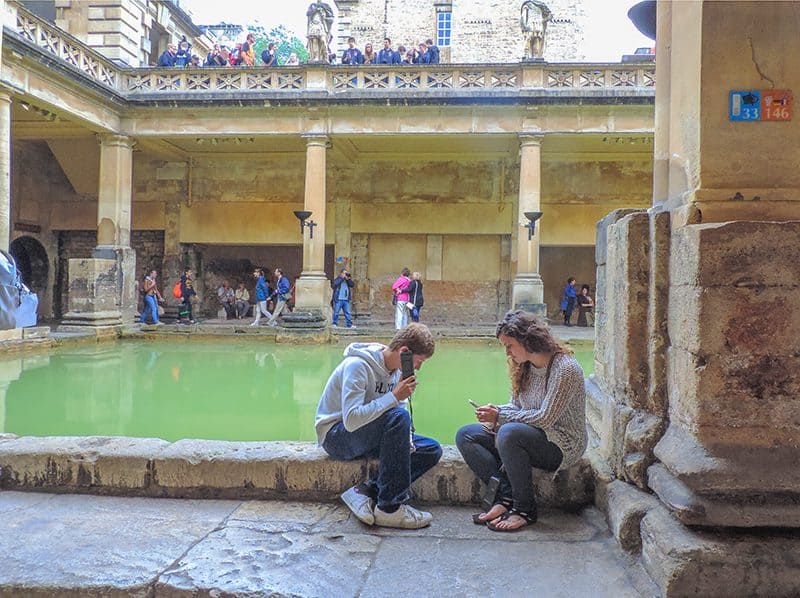
A Popular Stop for Day-Trippers: The Roman Baths
Like many other day-trippers arriving in Bath, I headed out after I dropped my bags at my hotel. So off I went into the heart of town, which surrounds Bath Abbey and the old Roman Baths.
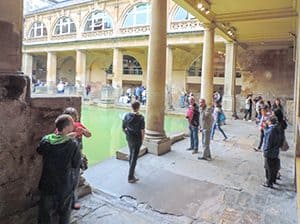
The Romans made the city the country’s first spa resort, and the surviving complex memorializes Roman Britain. It’s also the best-preserved ancient temple and Roman bath in Northern Europe.
According to legend, the father of Shakespeare’s King Lear is said to have discovered the natural hot springs in 860 BC and founded the city on the spot. Centuries later, invading Romans built a temple on the site, dedicated it to the goddess Minerva, and launched spa tourism.
A tour of the baths is quite interesting. And it will also leave you with a healthy respect for Roman engineering.
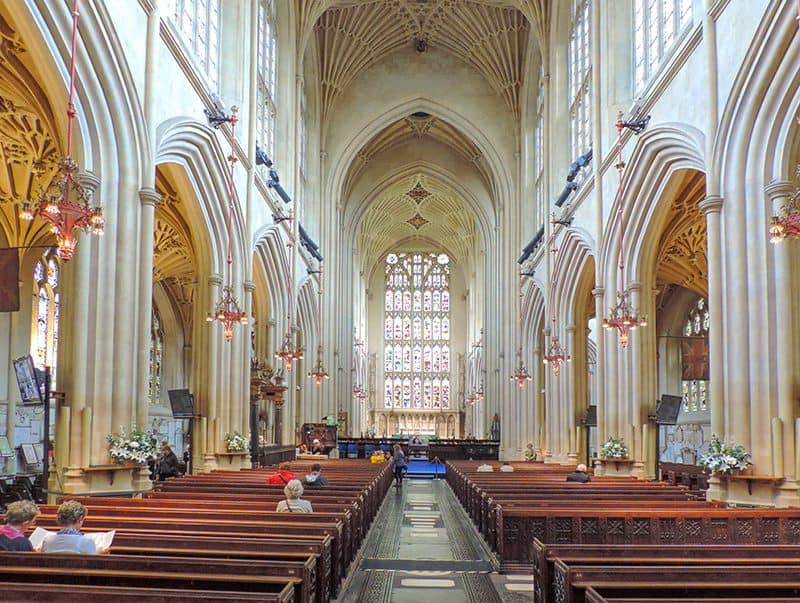
Post-Rome for Day-Trippers
After the fall of the Roman Empire, the springs continued to be used for their curative powers. Surprisingly, even medieval monks exploited them for travelers. But it wasn’t until the visit to them by Queen Anne in 1702 that they came back into vogue.
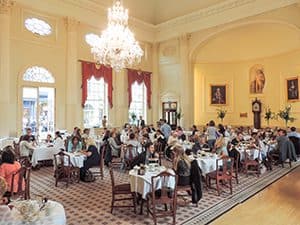
Bath Abbey, built in 1499, overlooks the Baths and rises above a courtyard filled with tourists, buskers, and many shops. The beautiful interior is well worth a visit; the façade outside has stone Angels climbing to heaven on Jacobs Ladder.
Adjacent to the Baths are the famous Pump Rooms, a beautiful old tearoom hub of 18th-century spa society. Pause for a snack, cup of tea, or flute of Champagne. Georgians, however, drank the spa waters as a cure for many ailments. You can also sip it from the fountain here, although it is an “acquired” taste.
While the old Roman baths remain a fascinating historic site, the opening of the Thermae Bath Spa in 2006 has once again made Bath a spa destination, especially as a day trip from London or a long weekend. It’s just a short walk away and offers a wide range of spa treatments, with its open-air rooftop pool contributing significantly to its popularity.
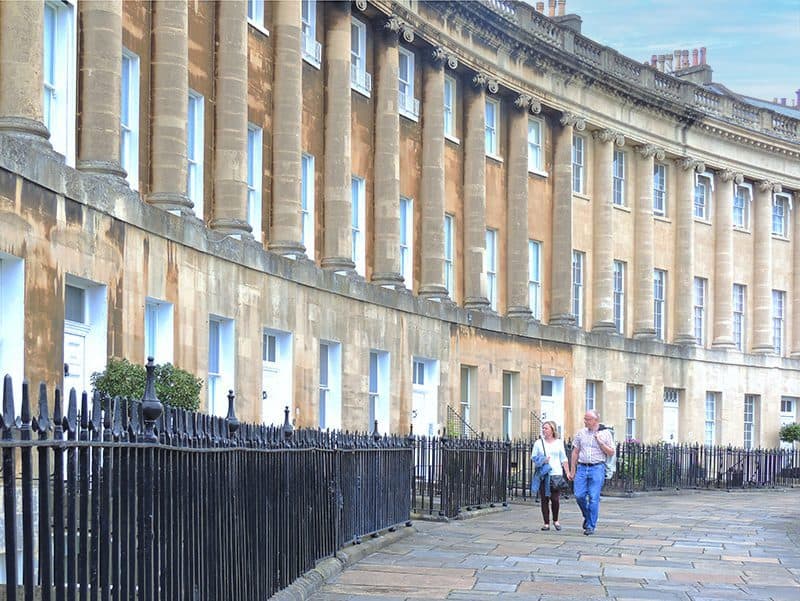
A Great Place to Visit on a Day Trip: Number One Royal Crescent
Whether or not you’re interested in Georgian architecture you should see (or, perhaps, “can’t help but see”) the Royal Crescent. It’s often called the most majestic street in Britain.
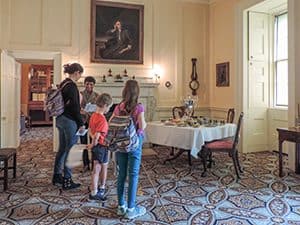
A magnificent piece of architecture, it’s a semicircle of three-story buildings overlooking the city and its greenery.
Don’t miss visiting Number One Royal Crescent, a very interesting home-museum that provides a glimpse into what aristocratic life was like in the 18th century. It’s also fascinating and well furnished, and the docents in each room are quite knowledgeable.
Be ceertain to look at the description sheets that are available to visitors. They provide an overview of each room and other miscellaneous things of the period. The gift shop is also interesting.
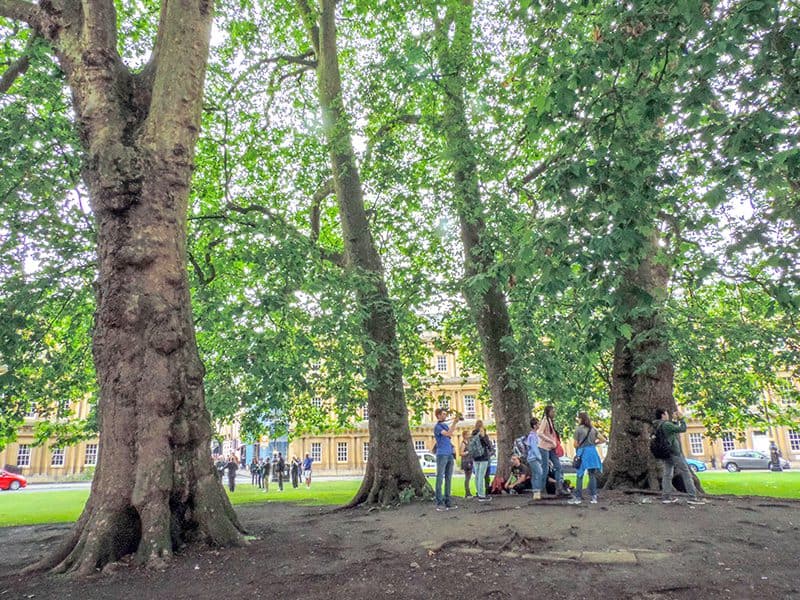
The Circus and Jane Austen
From the Royal Crescent, walk up Brock Street to the Circus, a Colosseum-like circle of homes. (The 18th-century painter Thomas Gainsborough lived in #17). The Circus is comprised of 33 homes divided into three equal sections. There’s also a small park with a large stand of trees in its center.
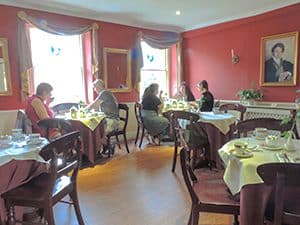
Turn right down Gay Street, and you’ll come to the Jane Austen Centre after a few minutes. At #40, it’s a tribute to the novelist often referred to as Bath’s most famous resident. (This is somewhat ironic since Austen intensely disliked the city.) Nevertheless, it’s a must-stop for many on a London to Bath day trip.
Even if you’re not an Austin fan, it’s an excellent and fascinating little museum, providing a fair amount of information about Austen and the times in which she lived. And the Centre’s Regency Tea Room tempts many with Mrs. Bennet’s Lemon Drizzle Cake.
If nothing else, take a selfie with the Greeter in his top hat out in front.
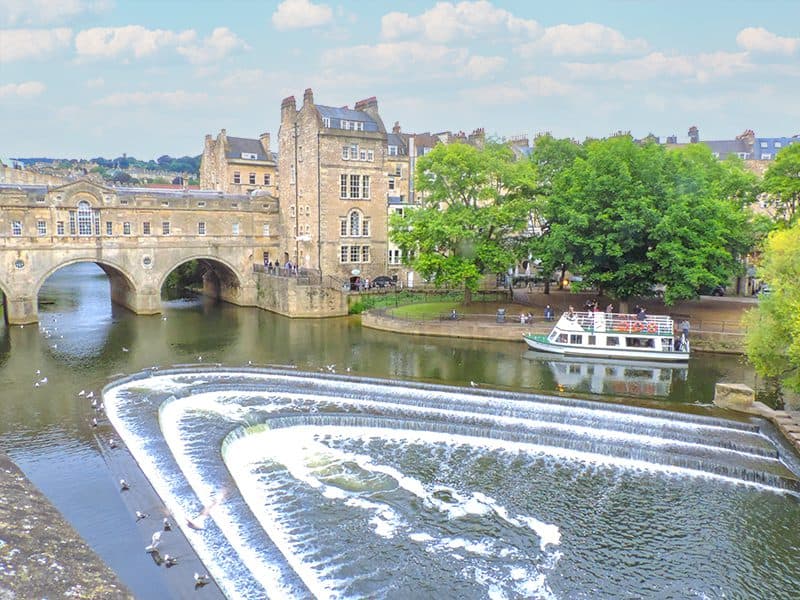
Pulteney Bridge and The Holburne Museum
Leave the Centre and continue down Gay Street, turning left toward the Avon River after a few blocks. (By the way, it’s not the same Avon that flows through Shakespeare’s Stratford-upon-Avon; there are several rivers of the same name all over England.)
Head for the beautiful Pulteney Bridge, which is lined with shops like the Ponte Vecchio in Florence and the Ponte di Rialto in Venice. Before you cross the bridge, however, on your right, you’ll see Grand Parade and the Parade Gardens, a beautiful little park where in the 18th century courting couples came for secret liaisons.
Head across it and walk up Great Pulteney Street, a wide street lined with more beautiful Georgian-era homes, and in approximately 10 minutes, you’ll come to the Holburne Museum.
The small Holburne is enjoyable despite its size and provides a pleasant museum experience if you’re on a rushed one or two-day schedule in Bath. Its collection includes works by Gainsborough, Reynolds, and Stubbs and pieces of Wedgewood, some bronzes, and also early-period furniture.
There’s a modern extension to the beautiful, old museum building, encompassing a garden café serving seasonal lunches. So in the warm weather, you can lunch out on the lawn.
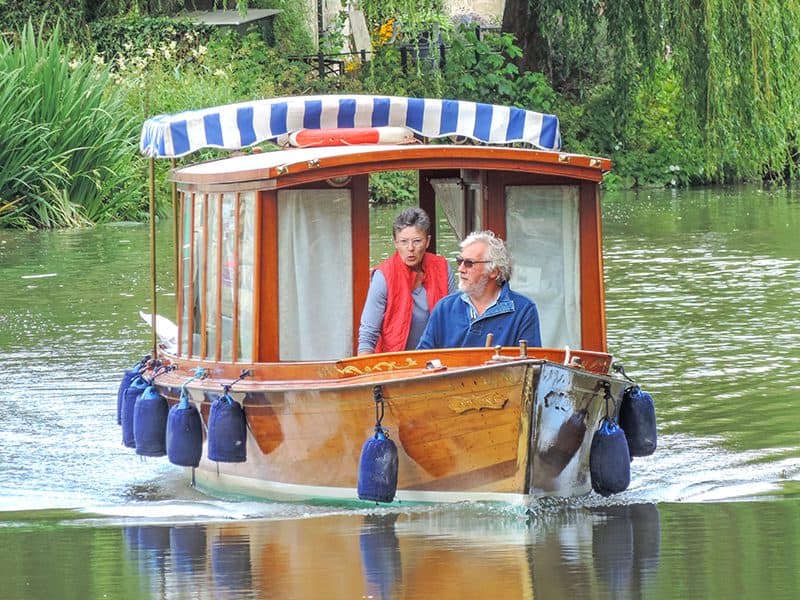
See the Narrowboats
If you want to see something interesting when leaving the Holburne, ask for directions to the narrowboats off Bathwick Hill Road.
Narrowboats are “narrow boats” on which some people live, and others use for holidays touring England and Wales.
So if you’ve never seen them, here’s your chance to see them up close and perhaps speak with some of their owners.
You’ll find an entrance down to the towpath from the street next to the bridge on Bathwick Hill Road, right past the Tesco Express supermarket. The walkway along the towpath is part of Britain’s National Waterway Walk.
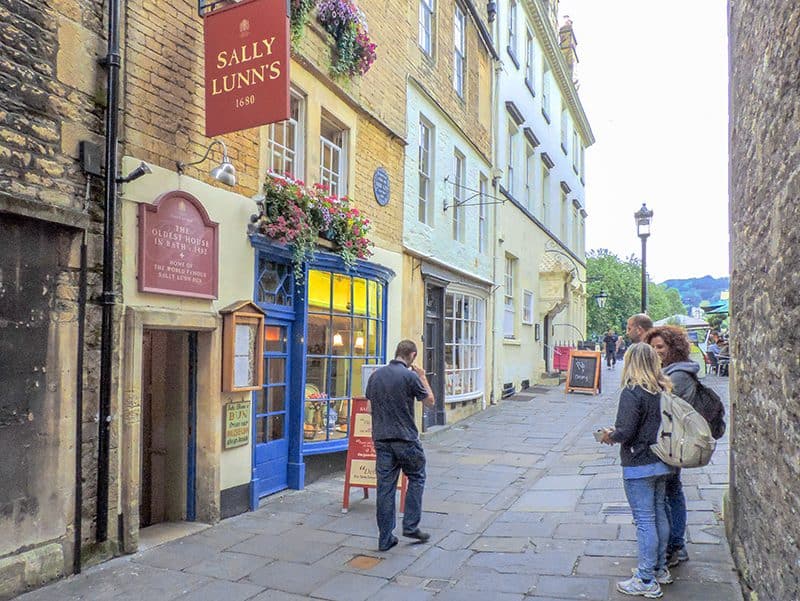
Not Only for Day-Trippers: Sally Lunn’s
Near Grand Parade, tucked away at #4 North Parade Passage, is Sally Lunn’s, home of the original “Sally Lunn’s Bun,” still served here and made from the original recipe.
Sally was a young French refugee who sold buns, similar to the sweet French brioche bread, from her house (circa 1482), now a small historical restaurant and Museum. Excavations beneath the house show that the site has been used since Roman times.
The restaurant is open from morning to night, with dinners in a candlelit atmosphere. For some, it can be the perfect ending for their day trip back to London.

How to Get to Bath From London
According to Rail Europe, the fastest trains from London to Bath take around 1 hour and 14 minutes. Trains depart from Paddington Station in London.
On weekdays, the first train leaving London is scheduled to depart at around 05:18. The last departure is usually at around 23:32. On Saturdays and Sundays, trains leave London at around 06:30, with the last train leaving at around 23:37. There are frequent services on this particular rail route. On average, there are about 68 trains per day traveling between the two cities. They leave approximately every 13 minutes.
Prices for a one-way ticket between the two cities range from US$51.50 to $223.50.
Buses to Bath depart from the National Express’s London Victoria Coach Station. The Coach Station is approximately 300 yards from the tube network (served by the Victoria Line, the District Line and the Circle Line).
One-way bus fares London – Bath begin at £5 (approximately $6.30).
You can also drive to Bath from London although that normally isn’t recommended unless you’re continuing on to somewhere else after visiting Bath. You’ll likely travel the 115 miles between the two cities on the popular, and sometimes congested, M4 motorway. The drive will take you about 2 1/2 hours if you don’t hit much traffic. Be aware, however, that once you arrive in Bath finding a parking space can be a nightmare.
You may also enjoy: The Top 10 Places in England / Attractions of the Lake District, England’s Most Beautiful Place / 15 Great European Day Trips by Rail
If You Go:
Visit Bath
Bath Visitor Information Centre
Abbey Chambers
Abbey Churchyard
Bath BA1 1LY
http://visitbath.co.uk/
Tel: +44 (0) 1225 322442

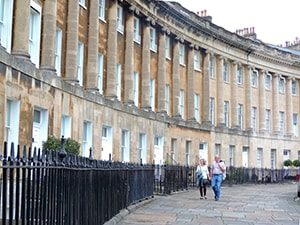
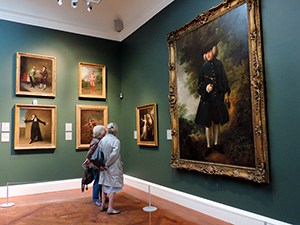
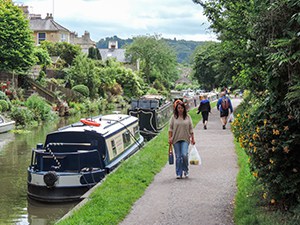
Leave a Reply